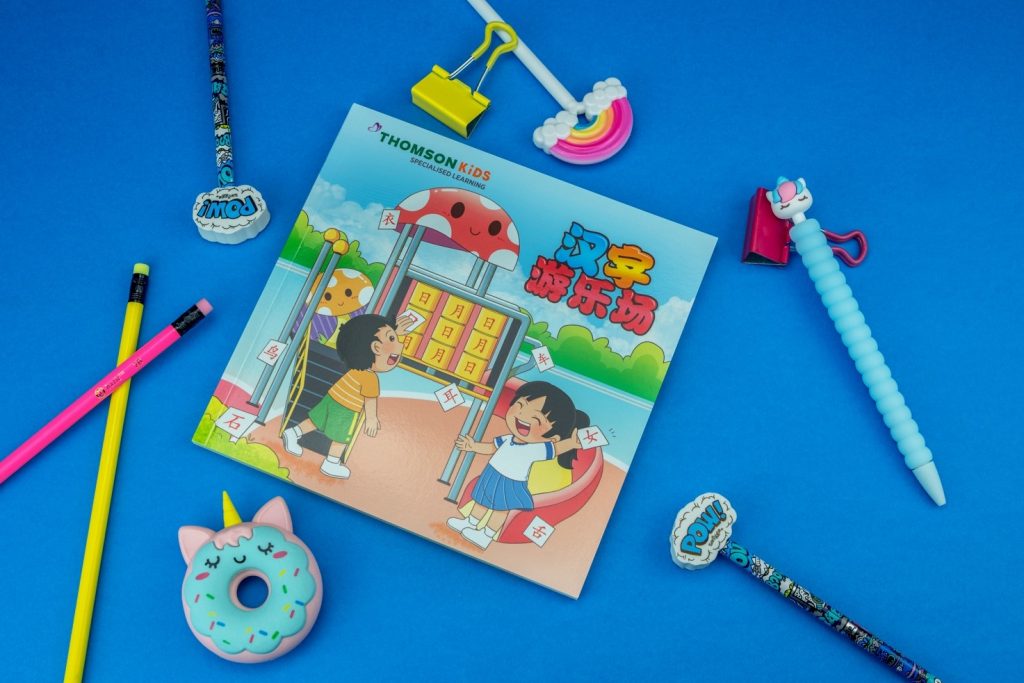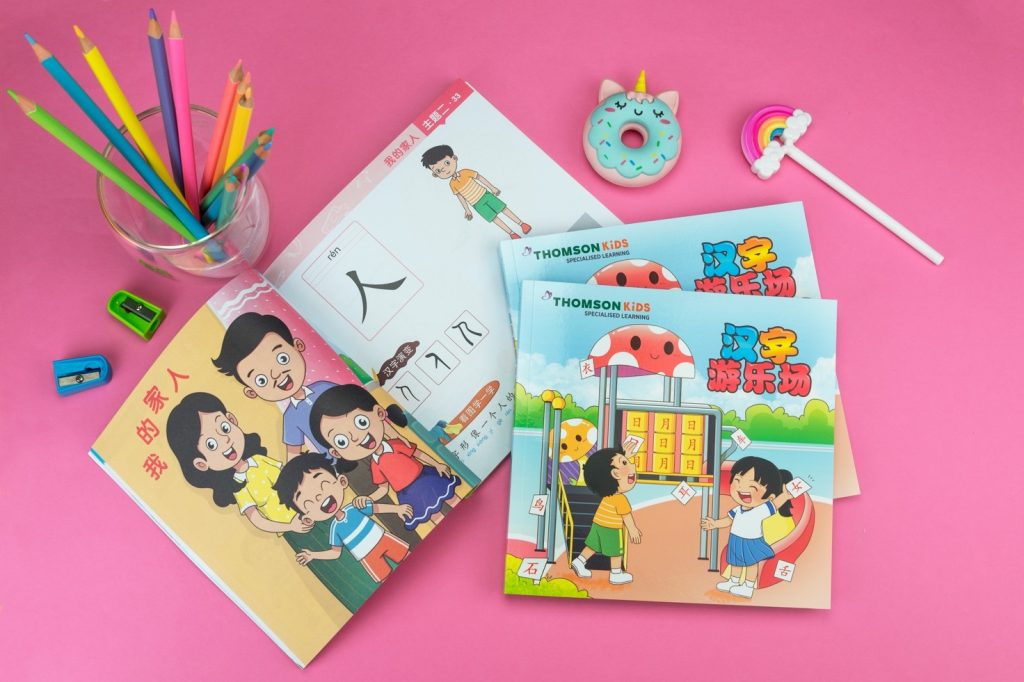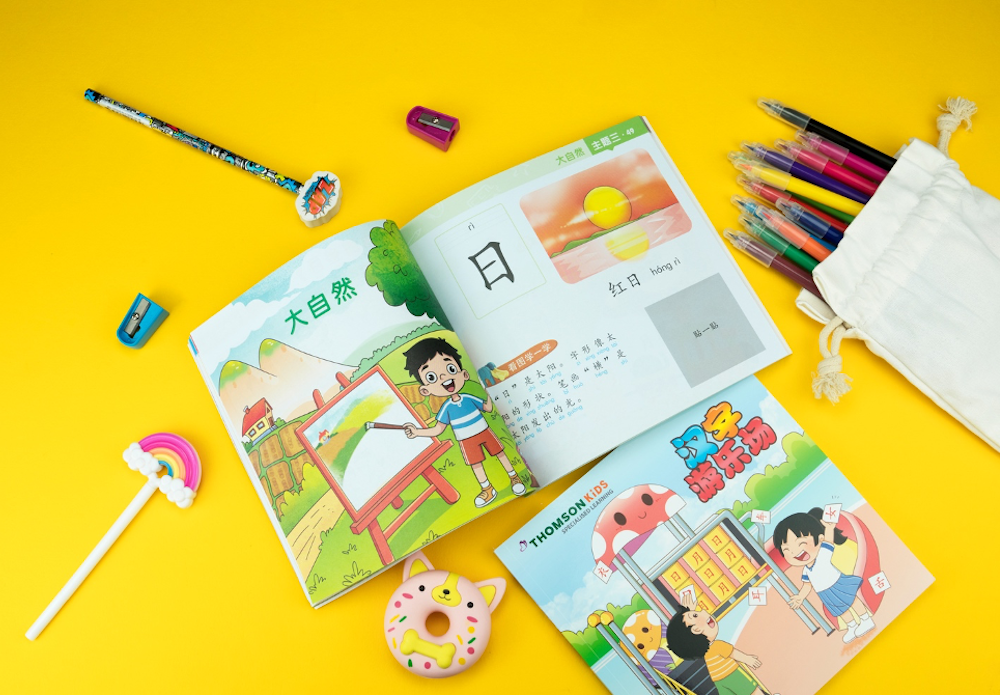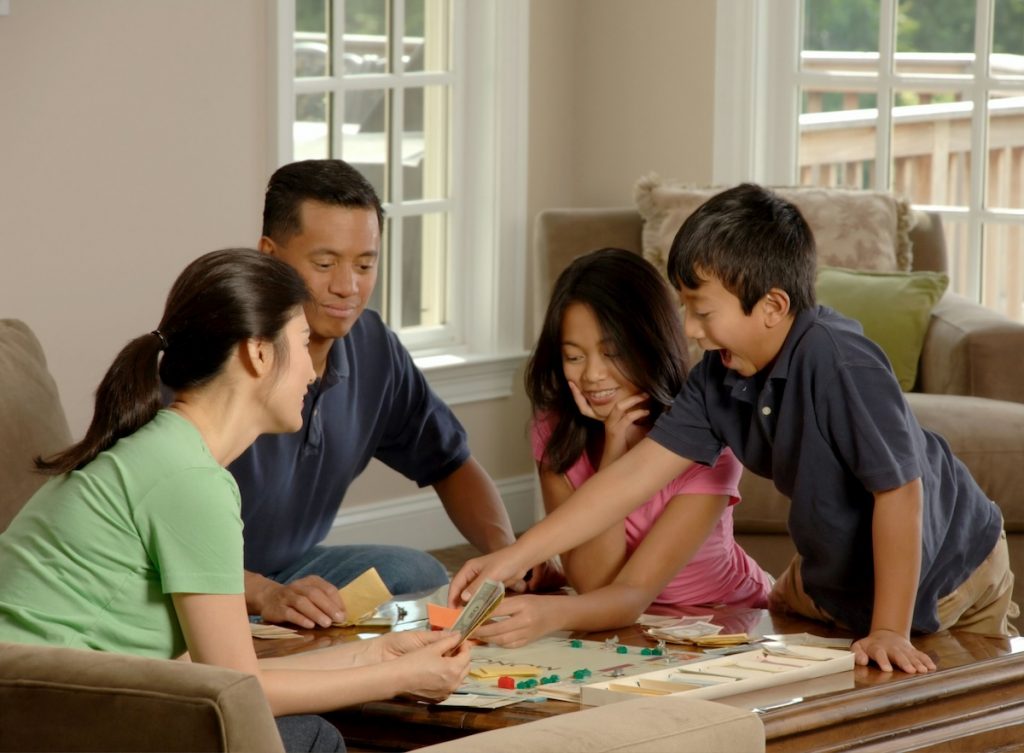Thomson Kids, part of Thomson Medical Group, has designed a new activity book to help kids with dyslexia learn Mandarin. Studies have shown that people with dyslexia struggle with the Chinese language as the phonetic sound of a Chinese character does not necessarily correspond to its visual form. The letter sound conversion in English does not apply in Chinese.
Dyslexia can occur in any language and manifests differently from one language to another. Some 10 per cent of the Singapore population is likely to have dyslexia, while the Dyslexia Association of Singapore considers four per cent of them are severe enough to warrant intervention.
The Thomson Kids activity book adopts the Orton-Gillingham approach, a multi-sensory structured literacy approach to teach struggling readers. It consists of 127 pages, organised in six chapters/themes of My Body, My Family, Nature, Animals, Things and Food. Each chapter comes with vibrant visuals, stickers and comics accompanied by audio recordings to stimulate learning of 48 high frequency Chinese characters. These will help develop and improve reading, oracy and listening skills.
Mummyfique spoke to Ms Frances Yeo, Principal Psychologist & Programme Director of Thomson Kids. She specialises in working with children and teens, together with their parents and families. She’s also experienced in a wide range of issues including attention deficit hyperactivity disorder, autism spectrum, learning disorders, eating disorders, and esteem issues. As a mum, she knows that every child is different.
Senior Specialist Teacher and co-author of this book, Ms See Lay Yen also shares her insights on teaching Chinese to children with dyslexia and how the Thomson Kids activity book helps to facilitate learning. Lay Yen has been specialising in providing Chinese Language intervention for students with Specific Learning Difficulties (SpLD) since 2012.

Why teach children with dyslexia?
Dyslexia is one of the most common types of Specific Learning Disorder. Yet, this condition is not well known by the public. Students with Dyslexia need specialised interventions to help them learn to read, write and succeed in school.
Do you think that children with dyslexia find it more difficult learning Chinese over English? Why do you think this is so?
Not necessarily. In general, there are a large number of visual symbols in Chinese. Chinese characters are also similar in appearance and may differ by simply adding or deleting a single stroke. Dyslexic children may find it extremely difficult to remember the slight differences between Chinese characters. The Chinese language is also tonal. Although there are some script-sound regularities in Chinese, children need to learn a lot more symbol-sound association than in English.
However, Dyslexia manifests differently in one language than another. Children with dyslexia in the English language, for instance, may experience no difficulties learning Chinese and vice versa.
A neuroimaging study in 2008 led by Dr Siok Wai Ting showed that different parts of the brain were involved in learning the two types of language. While the left temporoparietal regions are crucial for learning English, the left middle frontal gyrus region is important for reading and writing Chinese.
What are the teaching methods you employ in your classroom to help these children learn Chinese easily?
The Orton- Gillingham approach is an evidence- based structured literacy approach widely used to teach struggling readers. The teaching methods for the Chinese curriculum at Thomson Kids applies the principles that govern the approach. Some principles and teaching strategies are as described below:
• Language- based
Learning is based on the characteristics of the language.
E.g. We teach students word recognition strategies such as the pictorial method which helps students give meanings to the characters. This method is language based and can be used to learn pictographic characters and other characters. Pictographic characters resemble drawings and visually represent the meanings of the characters. For example, the character “山” is a pictographic character which means hill or mountain. The character looks like the drawing of three mountain peaks.
• Cognitive
Students are encouraged to think through any language obstacles, instead of guessing.
E.g. students learn the semantic radical 走之底 which is associated with the meaning “walk”. This will help them in remembering characters which contain the semantic radical, such as “进” which means “enters”, you need to walk to enter, hence the character contains the semantic radical.

• Structured, sequential and cumulative
Students learn basic concepts and progress to more complex ones. Each lesson is cumulative, building on concepts previously learnt.
E.g. Students learn the character components 田 which means farmland and 力 which means strength, before learning 男which means male.
• Simultaneously multisensory
Learning that takes place in a simultaneously multisensory manner let students utilize the major pathways to the brain, to ensure learning. The major pathways include the visual pathway, the auditory pathway and the kinaesthetic- tactile pathways.
E.g. when learning to write a Chinese character, students are guided to:
First, look at the Chinese character. This is using the visual pathway. Next, trace the character and sound it out. Tracing involves movement and is using the kinaesthetic pathway. Sounding out let the student hear the sound of the character and is using the auditory pathway. Then, write and sound out the character, a few times. Writing involves the kinaesthetic pathway while sounding it out involves the auditory pathway. Lastly, the student covers what has been written and test himself/herself by writing and sounding out again.
Letting students trace, write or make Chinese characters using various media, such as play dough, sand and ice-cream sticks, can help them learn through the kinaesthetic-tactile pathways. These media also make learning more fun.
In addition, the design of the Chinese curriculum at Thomson Kids is based on MOE Primary School Chinese syllabus. The curriculum supports students in various aspects of learning the language, including listening, speaking, word recognition, reading comprehension and writing. We also teach students exam skills and answering techniques.
There are also hands-on activities and games to make learning more engaging and memorable. Technology is also being used to assist learning.
Tell us more about the Chinese Activity Book for Children with Dyslexia.
The book is written and designed for kindergarten and lower primary school students in Singapore who struggle with learning the Chinese language. The learning content is designed to support students struggling with word recognition. It will also help them improve their oracy. Besides learning word recognition, students will be exposed to vocabulary and basic sentence structures, while learning to comprehend texts through the reading of comic stories. Activities related to executive functions have also been included. As the content is written within the Singapore context, students can relate to them easily.

What led you to craft such a book?
We set up Thomson Kids Specialised Learning to help students with learning difficulties succeed in life. Thomson Kids has developed a curriculum for students in mainstream school with learning difficulties. This book was developed as part of the curriculum which we use in our programme.
Presently, there is no specific resources for teaching children with Chinese dyslexia for Singapore. So we hope to develop more teaching and learning resources to help these students learn and enjoy their learning.
What key features are there in the book that support dyslexic children in their learning of Chinese?
The key features are as described below:
(a) Building Blocks/Radicals
Most Chinese characters are made up of smaller building blocks or radicals, like LEGO pieces. For example, the character “明” is made up of the radicals “日”and “月”. Research has shown that knowledge about radicals facilitates the learning of more complex characters that contain those radicals. Research has also shown that students with Specific Learning Difficulties benefit from a systematic, multisensory, and language-based instructional approach.
In this book, students will learn about one type of word recognition strategy related to the formation of Chinese characters, the “pictorial method”. This method is language-based and gives meaning to the characters. It can be used to learn pictographic characters and other characters. Pictographic characters resemble drawings and visually represent the meanings of the characters. For example, the character “山” is a pictographic character which means hill or mountain. The character looks like the drawing of mountain peaks.
Students will learn 48 basic Chinese characters which are spread out across the six themes. Each basic character can be found as a radical in other characters. These 48 basic Chinese characters can also be found in lower primary school Chinese textbooks in Singapore.
(b) Sentence structures
Basic sentence structures are found in the comic stories, such as “……是……” and “……也……”. The sentence structures are often repeated in a story to help the student pick up the sentence structure and improve their oracy.
(c) Comic stories
Each chapter ends with comic stories. They contain characters learnt in the chapter and are used to reinforce word recognition. An audio recording with a QR code has also been included in each comic story.
(d) Activity Pages
Students with learning difficulties have deficits in executive functions such as working memory. An activity related to working memory, visual scanning or word recognition can be found in each chapter.
The book is already being used in Thomson Kids Specialised Learning curriculum and distributed to students of Thomson Kids’ Specialised Chinese Programme.
It’s currently sold on the Thomson Kids website – https://www.thomsonkids.com/specialised-chinese-book-for-kids













